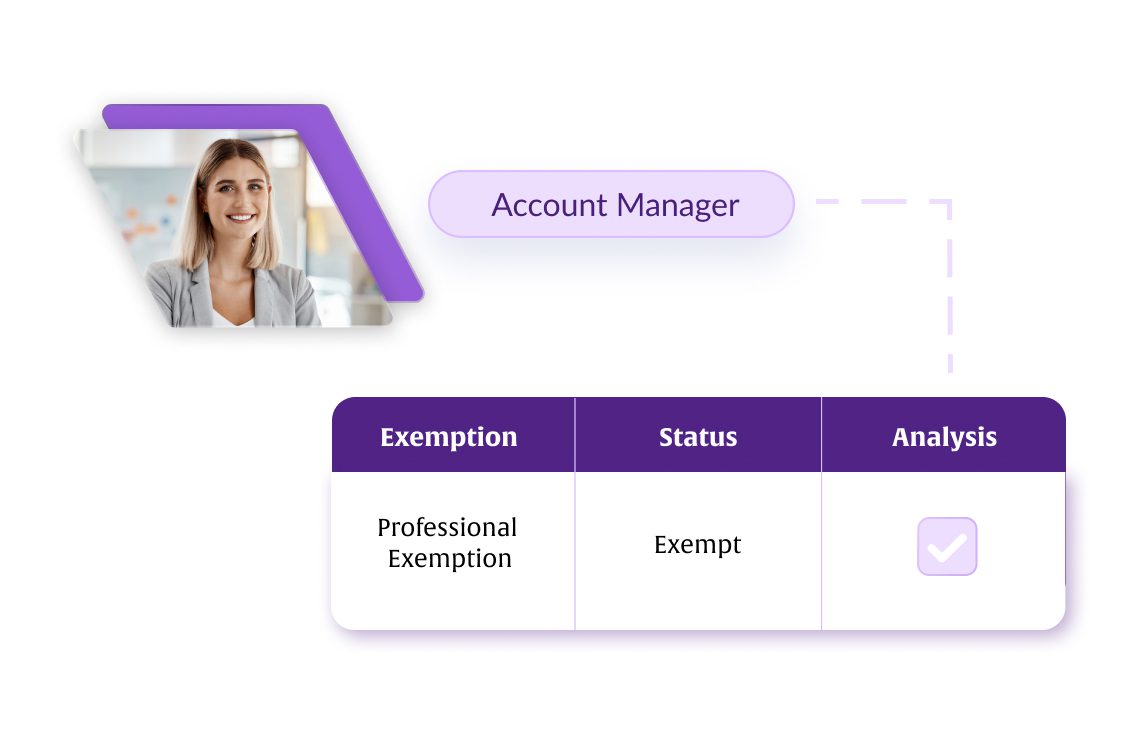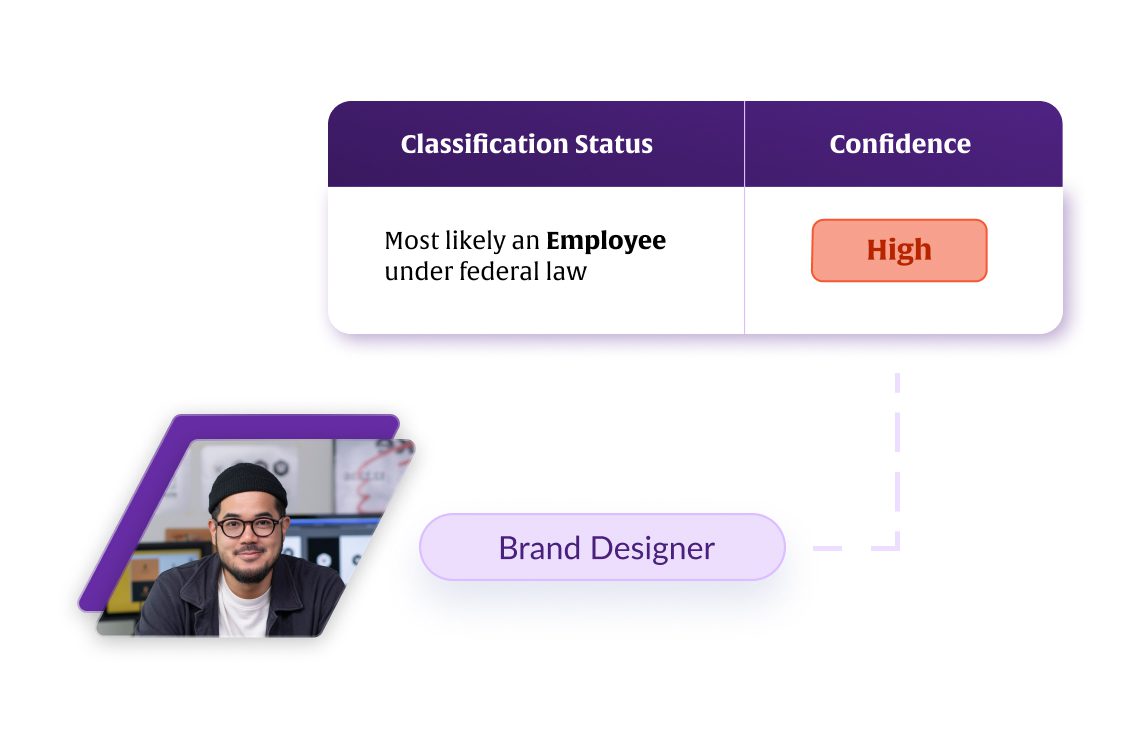Why accurate employee classification matters
Avoid fines and penalties
Fines from the IRS and DOL are common consequences of misclassification.
Prevent back pay issues
Misclassification may require retroactive compensation for wages and benefits.
Minimize disruptions
Legal challenges and audits can disrupt operations and drain resources.
Protect your reputation
Misclassification disputes can damage your brand and employee morale.

Exempt Non-Exempt Analyzer
Determine if an employee is exempt or non-exempt under the FLSA (Fair Labor Standards Act).
- Input employee details: job title, duties, salary, and hours.
- Our tool analyzes the data against FLSA criteria.
- Get a report with the classification and explanation.

Employee Contractor Analyzer
Determine if a worker is an employee or contractor under federal law.
- Enter worker details: role, expenses, and relationship.
- Our tool applies federal tests from FLSA, IRS, and ERISA.
- Get a report with the classification and explanation.

FAQs about Employee Classification
What is the difference between exempt and non-exempt employees?
Exempt employees are not entitled to overtime pay under the Fair Labor Standards Act (FLSA). They typically receive a salary rather than hourly wages and have job duties that are executive, professional, or administrative in nature. Non-exempt employees, on the other hand, are entitled to overtime pay for hours worked over 40 in a workweek and are usually paid on an hourly basis.
What is the difference between an independent contractor and employee?
The key difference between an employee and an independent contractor is the level of control and independence in the working relationship. Employees work under the direct control of the employer and are provided with benefits and tax withholdings, whereas independent contractors have greater autonomy over how they perform their work and are responsible for their own taxes and benefits.
Can an employee's classification change?
Yes, an employee’s classification can change if there are significant shifts in their job duties or salary. It’s important for employers to regularly review job classifications to ensure compliance with the FLSA. Additionally, changes in laws, such as salary thresholds, can also impact an employee’s classification.
How long does it take to complete a worker classification using these tools?
The process typically takes just a few minutes. You’ll answer a series of questions about the worker, and our tools will quickly analyze the data to provide you with a comprehensive report.
Do I need legal expertise to use these tools?
No legal expertise is required. Our tools are user-friendly and designed to guide you through the classification process with ease. If additional legal help is needed, our reports provide clear reasoning based on legal criteria, which can be shared with your legal team for further guidance.
Loved by HR professionals
Automate HR compliance
Avoid costly misclassification mistakes. If you’re unsure about compliance, schedule a demo to see how SixFifty simplifies risk mitigation.




